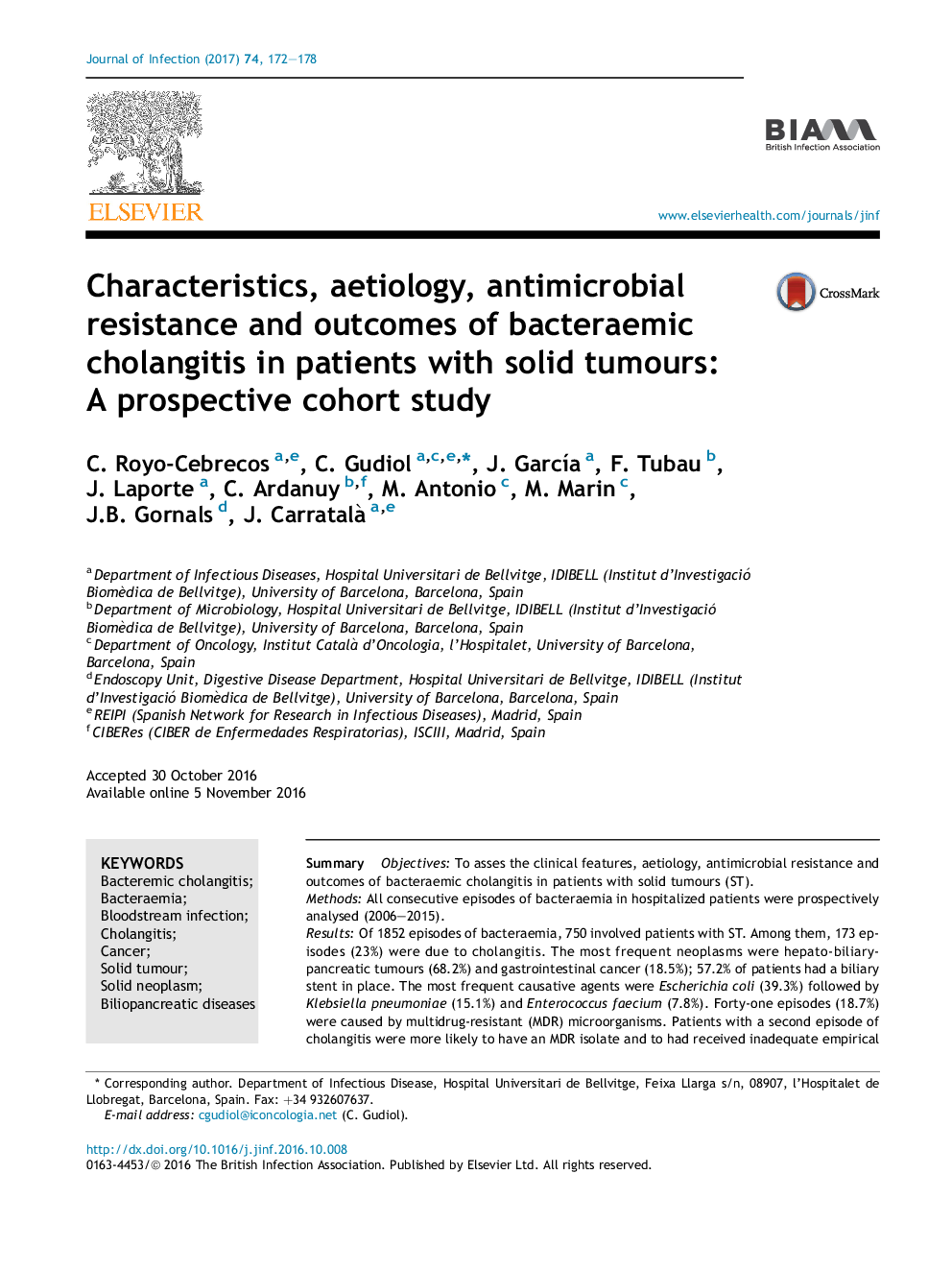| Article ID | Journal | Published Year | Pages | File Type |
|---|---|---|---|---|
| 5668760 | Journal of Infection | 2017 | 7 Pages |
â¢Bacteraemic cholangitis is frequent in patients with solid tumours.â¢The most frequent causative agents are Enterobacteriaceae and Enterococcus faecium.â¢Multidrug resistance is more frequent in a second episode of cholangitis.â¢Corticosteroids and malignancy-related complications present high mortality rates.
SummaryObjectivesTo asses the clinical features, aetiology, antimicrobial resistance and outcomes of bacteraemic cholangitis in patients with solid tumours (ST).MethodsAll consecutive episodes of bacteraemia in hospitalized patients were prospectively analysed (2006-2015).ResultsOf 1852 episodes of bacteraemia, 750 involved patients with ST. Among them, 173 episodes (23%) were due to cholangitis. The most frequent neoplasms were hepato-biliary-pancreatic tumours (68.2%) and gastrointestinal cancer (18.5%); 57.2% of patients had a biliary stent in place. The most frequent causative agents were Escherichia coli (39.3%) followed by Klebsiella pneumoniae (15.1%) and Enterococcus faecium (7.8%). Forty-one episodes (18.7%) were caused by multidrug-resistant (MDR) microorganisms. Patients with a second episode of cholangitis were more likely to have an MDR isolate and to had received inadequate empirical antibiotic therapy. 7-day and 30-day case-fatality rates were 7.6% and 26%, respectively. The only risk factors independently associated with 30-day case-fatality rate were corticosteroids and malignancy-related complications.ConclusionsBacteraemic cholangitis is frequent in patients with ST, and is mainly caused by Enterobacteriaceae and E. faecium. The emergence of MDR is of special concern, particularly in patients with a second episode of bacteraemia. Case-fatality rates are high, especially among patients receiving corticosteroids and presenting malignancy-related complications.
